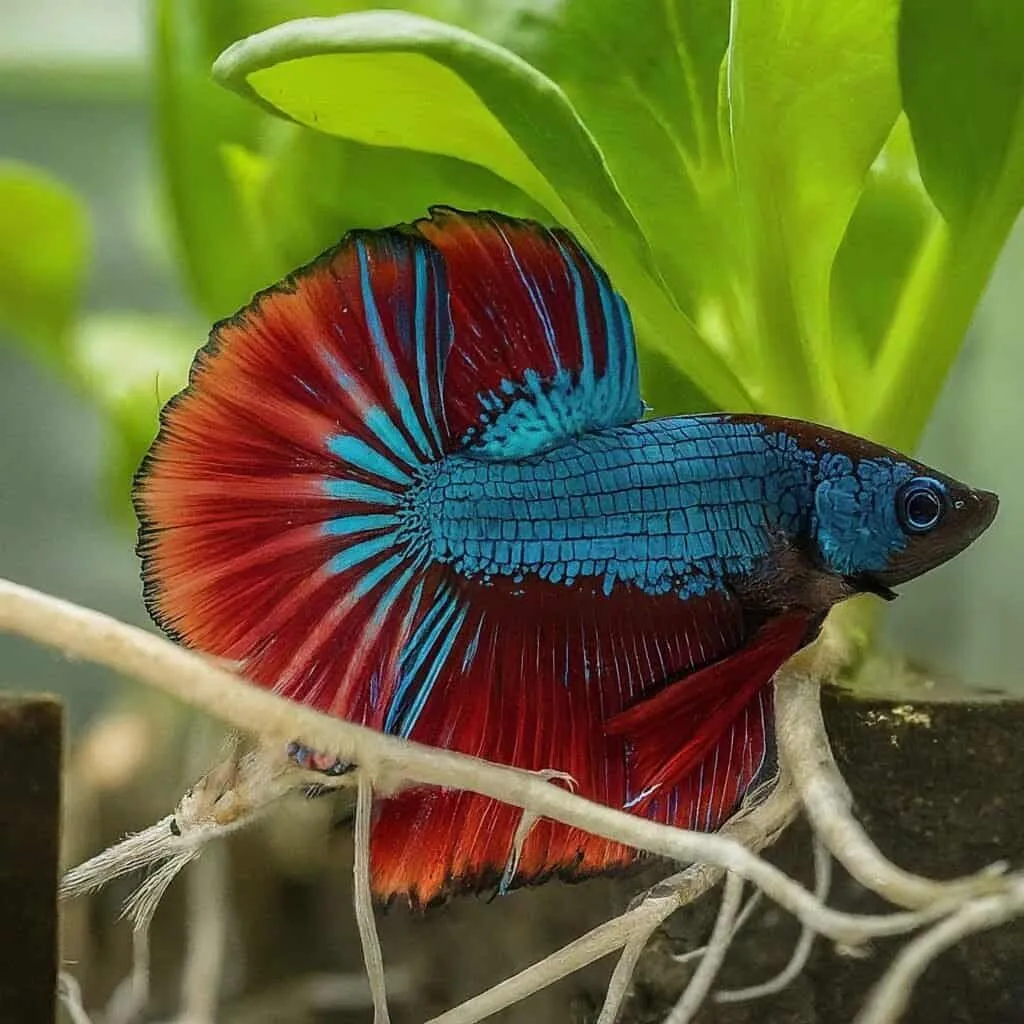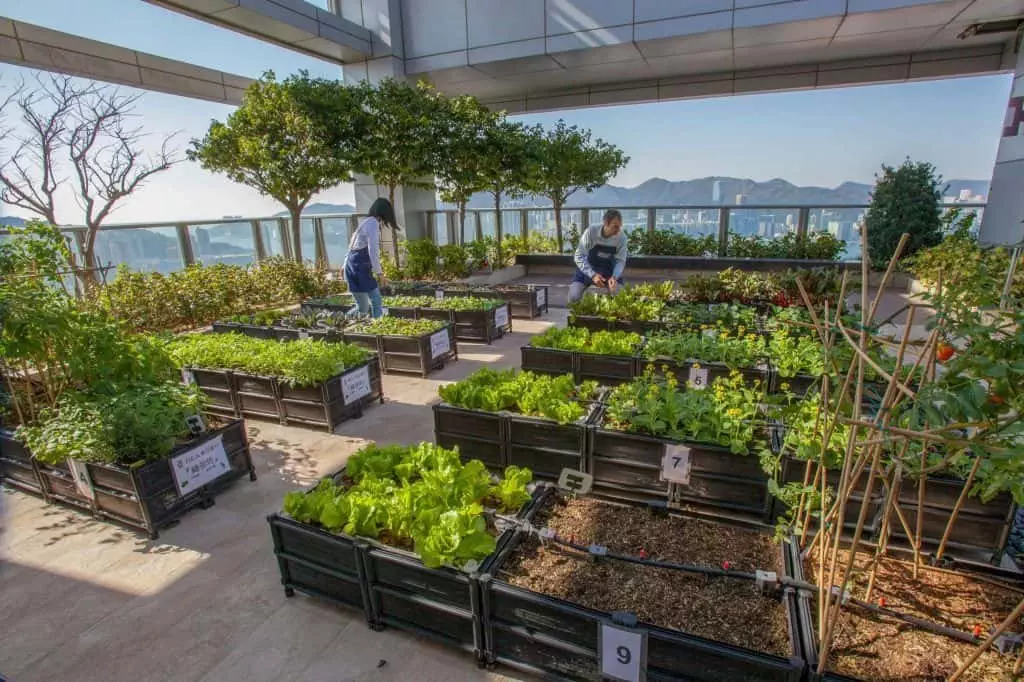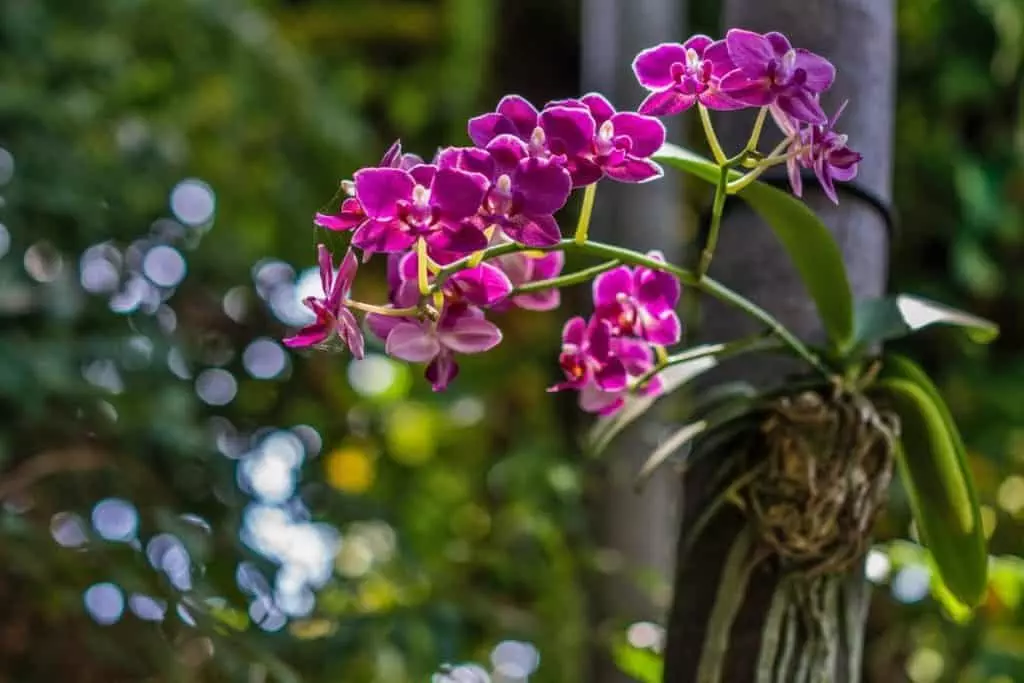Ideal fish for aquaponics include tilapia, trout, Koi, goldfish, and catfish due to their hardiness, fast growth rates, and compatibility with aquaponic systems.
Aquaponics is a revolutionary approach to sustainable food production that combines the principles of aquaculture (fish farming) and hydroponics (soil-less plant cultivation). This symbiotic system harnesses the natural relationship between plants and fish, creating a closed-loop ecosystem where the waste from the fish is used to nourish the plants, and the plants, in turn, purify the water for the fish. This innovative method not only produces a bountiful harvest of both fish and vegetables but also minimizes the environmental impact associated with traditional farming and fishing practices.
The key to the success of an aquaponic system lies in the delicate balance between the fish and the plants. The fish provide the essential nutrients, such as nitrogen and phosphorus, that the plants require for growth, while the plants act as a natural filter, removing harmful compounds from the water and maintaining a healthy environment for the fish. This symbiotic relationship is the foundation of aquaponic gardening, allowing for the efficient and sustainable production of a diverse range of crops and aquatic species.
The benefits of aquaponic gardening are numerous and far-reaching. By combining the cultivation of fish and plants, aquaponics reduces the need for chemical fertilizers, pesticides, and freshwater resources, making it a more environmentally friendly alternative to traditional agricultural methods. Additionally, aquaponic systems can be designed to operate in a variety of settings, from small-scale backyard gardens to large-scale commercial operations, making them accessible to a wide range of individuals and communities.
Key Takeaways
- Aquaponics is a sustainable system that combines aquaculture and hydroponics.
- Choosing the right fish is crucial for the success of an aquaponics system.
- Tilapia is a popular choice for aquaponics due to its versatility and fast growth.
- Koi are vibrant and hardy fish that can thrive in aquaponics systems.
- Catfish are efficient at converting waste in aquaponics systems, making them a great choice for sustainable farming.
The Importance of Choosing the Right Fish
The selection of the right fish species is a crucial aspect of a successful aquaponic system. The fish not only provide the necessary nutrients for plant growth but also play a vital role in maintaining the overall health and balance of the ecosystem. When choosing fish for an aquaponic system, several factors must be considered, including their compatibility with the system, their ability to efficiently convert waste into plant-available nutrients, and their adaptability to the unique aquaponic environment.
Compatibility with the aquaponic system is of utmost importance. The chosen fish species must be able to thrive in the specific water conditions, pH levels, and temperature ranges required for optimal plant growth. Additionally, the fish must be able to coexist peacefully with any other aquatic species that may be present in the system, as well as with the plants themselves. Incompatible fish can disrupt the delicate balance of the ecosystem, leading to poor plant growth, reduced fish health, and even system failure.
The ability of the fish to efficiently convert their waste into plant-available nutrients is another critical factor. Different fish species have varying rates of waste production and nutrient conversion, which directly impact the nutrient levels available to the plants. Selecting fish that are effective at converting their waste into forms that can be readily absorbed by the plants, such as ammonia and nitrates, is essential for maintaining a thriving aquaponic system.
Finally, the adaptability of the fish to the unique aquaponic environment is a crucial consideration. Aquaponic systems often have different water quality parameters, feeding regimes, and environmental conditions compared to traditional aquaculture setups. The chosen fish must be able to adapt to these unique conditions, ensuring their long-term health and productivity within the system.
Tilapia: The Versatile Aquaponic Favorite
Tilapia, a freshwater fish native to Africa and the Middle East, has emerged as a popular choice for aquaponic systems due to its versatility and suitability for this type of cultivation. Tilapia are known for their hardy nature, rapid growth, and efficient conversion of feed into biomass, making them an ideal candidate for aquaponic gardening.
One of the primary advantages of using tilapia in an aquaponic system is their compatibility with the unique water conditions and nutrient requirements of the plants. Tilapia are adaptable to a wide range of water temperatures, pH levels, and dissolved oxygen concentrations, allowing them to thrive in the carefully balanced aquaponic environment. Additionally, tilapia are prolific producers of waste, which is rich in nitrogen and other essential plant nutrients, providing a steady supply of nourishment for the growing plants.
Another key benefit of incorporating tilapia into an aquaponic system is their ability to efficiently convert their waste into forms that are readily available for plant uptake. Tilapia produce high levels of ammonia, which can be quickly converted into nitrates by the beneficial bacteria present in the system. This process not only provides a continuous source of plant-available nutrients but also helps to maintain the water quality, ensuring a healthy environment for both the fish and the plants.
Despite their many advantages, there are a few considerations to keep in mind when cultivating tilapia in an aquaponic system. Tilapia are tropical fish and require relatively warm water temperatures, typically between 70-85°F (21-29°C), to thrive. This temperature range may limit the geographical locations where tilapia-based aquaponic systems can be successfully implemented. Additionally, tilapia are known to be prolific breeders, which can lead to overpopulation and competition for resources if not properly managed. Careful monitoring and population control measures may be necessary to maintain the balance of the aquaponic ecosystem.
Koi: The Vibrant and Hardy Option
Koi, a colorful variety of the common carp, have gained popularity in recent years as a viable option for aquaponic systems. These ornamental fish, known for their vibrant hues and graceful movements, offer a unique aesthetic appeal to aquaponic gardens while also contributing to the overall health and productivity of the system.
One of the primary advantages of incorporating koi into an aquaponic setup is their hardy nature and adaptability to a wide range of water conditions. Koi are known to be resilient and can tolerate fluctuations in water temperature, pH, and dissolved oxygen levels better than many other fish species. This makes them well-suited for the dynamic environment of an aquaponic system, where maintaining a delicate balance is crucial for the success of the entire ecosystem.
In addition to their hardiness, koi also excel in their ability to efficiently convert their waste into plant-available nutrients. Like tilapia, koi produce high levels of ammonia and other nitrogenous compounds that can be readily converted by beneficial bacteria into nitrates, which are readily absorbed by the plants. This efficient nutrient cycling helps to sustain the growth and productivity of the aquaponic system.
While koi can be a valuable addition to an aquaponic system, there are some considerations to keep in mind. Koi are generally larger and more active fish compared to other common aquaponic species, which can result in higher water flow requirements and increased filtration needs. Additionally, koi are known to be voracious eaters, and their feeding habits may need to be closely monitored to ensure that the plants receive an adequate supply of nutrients without being outcompeted by the fish. Proper stocking densities and feeding regimes are essential for maintaining a harmonious balance between the koi and the plants in the aquaponic system.
Goldfish: The Classic Aquaponic Companion
| Fish Species | Optimal Temperature (°C) | Optimal pH Level | Growth Rate |
|---|---|---|---|
| Tilapia | 25-28 | 6.5-8.0 | Fast |
| Trout | 10-20 | 6.5-7.5 | Medium |
| Catfish | 25-30 | 6.5-8.0 | Fast |
| Carp | 20-30 | 7.0-9.0 | Medium |
| Goldfish | 18-22 | 7.0-8.0 | Slow |
Goldfish, a beloved and ubiquitous aquatic pet, have long been associated with aquaponic systems due to their adaptability, ease of care, and ability to contribute to the overall health of the ecosystem. As one of the most traditional choices for aquaponic gardening, goldfish offer a reliable and accessible option for those new to this innovative growing method.
One of the primary advantages of using goldfish in an aquaponic system is their hardiness and tolerance for a wide range of water conditions. Goldfish are known to be relatively hardy and can adapt to fluctuations in water temperature, pH, and dissolved oxygen levels, making them a suitable choice for the dynamic environment of an aquaponic setup. This adaptability allows goldfish to thrive in a variety of aquaponic system designs, from small-scale backyard gardens to larger commercial operations.
Another benefit of incorporating goldfish into an aquaponic system is their efficient conversion of their waste into plant-available nutrients. Like other fish species, goldfish produce ammonia and other nitrogenous compounds that can be readily converted by beneficial bacteria into nitrates, which are then absorbed by the plants. This nutrient cycling process helps to sustain the growth and productivity of the aquaponic system, while also maintaining a healthy environment for the fish.
However, it is important to note that goldfish may not be the most optimal choice for all aquaponic systems, particularly those with specific plant or water quality requirements. Goldfish are known to be relatively messy fish, producing a significant amount of waste that can lead to water quality issues if not properly managed. Additionally, goldfish may not be as efficient at converting their waste into plant-available nutrients as some other fish species, such as tilapia or koi. As a result, careful consideration of the system’s needs and the specific requirements of the plants being grown is essential when selecting goldfish as the aquaponic fish of choice.
Catfish: The Efficient Waste Converters
Catfish, a diverse group of freshwater fish known for their distinctive whisker-like barbels, have emerged as a compelling option for aquaponic systems due to their efficient waste conversion capabilities and their ability to thrive in a variety of aquatic environments.
One of the primary advantages of incorporating catfish into an aquaponic system is their exceptional ability to convert their waste into plant-available nutrients. Catfish are known to produce high levels of ammonia and other nitrogenous compounds, which can be readily converted by beneficial bacteria into nitrates that are readily absorbed by the plants. This efficient nutrient cycling process helps to sustain the growth and productivity of the aquaponic system, while also maintaining a healthy environment for the fish.
In addition to their waste conversion abilities, catfish are also known for their hardy nature and adaptability to a wide range of water conditions. Catfish can tolerate fluctuations in water temperature, pH, and dissolved oxygen levels, making them a suitable choice for a variety of aquaponic system designs. This adaptability allows catfish to thrive in both small-scale backyard gardens and larger commercial aquaponic operations.
Despite their many advantages, there are a few considerations to keep in mind when cultivating catfish in an aquaponic system. Catfish are generally larger and more active fish compared to some other common aquaponic species, which can result in higher water flow requirements and increased filtration needs. Additionally, catfish are known to be voracious eaters, and their feeding habits may need to be closely monitored to ensure that the plants receive an adequate supply of nutrients without being outcompeted by the fish. Proper stocking densities and feeding regimes are essential for maintaining a harmonious balance between the catfish and the plants in the aquaponic system.
Trout: The Cooler Water-Loving Fish
Trout, a beloved freshwater fish known for their delicate flavor and striking appearance, have emerged as a unique and intriguing option for aquaponic systems, particularly in cooler climates. While not as commonly used as some other fish species, trout can offer a distinct advantage in aquaponic setups that require a lower water temperature range.
One of the primary advantages of incorporating trout into an aquaponic system is their ability to thrive in cooler water conditions. Trout are adapted to colder environments, with an optimal water temperature range typically between 50-70°F (10-21°C). This makes them a suitable choice for aquaponic systems located in temperate or mountainous regions, where maintaining the warmer water temperatures required by species like tilapia may be challenging.
In addition to their temperature preferences, trout also excel in their ability to efficiently convert their waste into plant-available nutrients. Like other fish species, trout produce ammonia and other nitrogenous compounds that can be readily converted by beneficial bacteria into nitrates, which are then absorbed by the plants. This nutrient cycling process helps to sustain the growth and productivity of the aquaponic system, while also maintaining a healthy environment for the trout.
However, it is important to note that the incorporation of trout into an aquaponic system may come with some limitations and challenges. Trout are generally more sensitive to water quality parameters, such as dissolved oxygen levels and pH, compared to some other fish species. Maintaining the optimal water conditions for trout may require more specialized equipment and monitoring, which can increase the complexity and cost of the aquaponic system. Additionally, trout are typically more expensive to acquire and may have higher feed requirements than some other aquaponic fish options.
Factors to Consider When Selecting Aquaponic Fish
When selecting the appropriate fish species for an aquaponic system, there are several key factors that must be carefully considered to ensure the long-term success and sustainability of the entire ecosystem.
One of the primary factors to consider is the water quality and temperature preferences of the fish. Different species have varying tolerance levels for factors such as pH, dissolved oxygen, and water temperature. Choosing fish that are well-suited to the specific water conditions of the aquaponic system is crucial for maintaining a healthy and thriving environment.
Another important factor is the growth rate and feeding habits of the fish. Faster-growing species, such as tilapia, may be more efficient at converting their waste into plant-available nutrients, while slower-growing species may require more time to reach harvestable size. Additionally, the feeding habits of the fish, including their appetite and dietary preferences, can impact the overall nutrient balance and resource allocation within the aquaponic system.
Compatibility with the plants and other fish species is also a critical consideration. Some fish may be more aggressive or territorial, potentially disrupting the growth and development of the plants or outcompeting other aquatic species for resources. Careful selection of fish that can coexist harmoniously within the aquaponic system is essential for maintaining a balanced and productive ecosystem.
Finally, the availability and cost of the fish species must be taken into account. Some fish, such as trout or certain koi varieties, may be more expensive or difficult to obtain, particularly in certain geographic regions. Considering the accessibility and affordability of the fish species is important for ensuring the long-term viability and sustainability of the aquaponic system.
Unlocking the Potential of Aquaponic Fish
In the world of aquaponic gardening, the selection of the right fish species is a crucial factor in unlocking the full potential of this innovative growing method. From the hardy and versatile tilapia to the vibrant and adaptable koi, and from the classic goldfish to the efficient waste converters like catfish and trout, each fish species offers unique advantages and considerations that must be carefully weighed to create a thriving and balanced aquaponic ecosystem.
By understanding the specific needs and characteristics of these fish, aquaponic gardeners can make informed decisions that will not only support the growth and productivity of their plants but also ensure the long-term health and sustainability of the entire system. Whether you’re a seasoned aquaponic enthusiast or a newcomer to this revolutionary approach to food production, the careful selection of the right fish species can be the key to unlocking a bountiful and environmentally friendly harvest.
As you embark on your aquaponic journey, remember that the fish are not just a means to an end, but an integral part of a delicate and interconnected system. By embracing the diversity of aquaponic fish and tailoring your choices to the specific needs of your garden, you can unlock a world of possibilities and contribute to the growing movement towards sustainable and self-sufficient food production.
FAQs
What is aquaponics?
Aquaponics is a sustainable farming method that combines aquaculture (raising fish) and hydroponics (growing plants without soil). It creates a symbiotic environment where fish waste provides nutrients for plants, and the plants help purify the water for the fish.
What are the benefits of using fish in aquaponics?
Using fish in aquaponics provides a natural source of nutrients for the plants, reduces the need for chemical fertilizers, and creates a closed-loop system that conserves water. Additionally, the fish can be harvested for food, making aquaponics a sustainable and efficient method of farming.
What are the top 5 fish for aquaponics?
The top 5 fish for aquaponics are tilapia, trout, catfish, carp, and perch. These fish species are well-suited for aquaponics systems due to their ability to thrive in a controlled environment, their fast growth rates, and their compatibility with a variety of plant species.
How do I choose the right fish for my aquaponics system?
When choosing fish for an aquaponics system, it’s important to consider factors such as water temperature, pH levels, and the size of the fish tank. Different fish species have specific requirements, so it’s essential to select fish that are well-suited for the specific conditions of the aquaponics system.
What are some considerations for maintaining fish in an aquaponics system?
Maintaining fish in an aquaponics system requires monitoring water quality, providing proper nutrition, and ensuring the fish are healthy and disease-free. It’s important to regularly test the water for ammonia, nitrites, and nitrates, and to feed the fish a balanced diet to support their growth and well-being.
Originally posted 2024-05-11 10:16:44.







